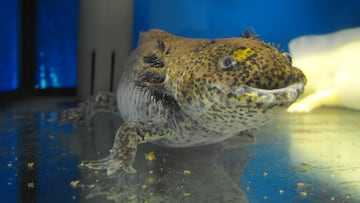The animal that can regenerate its brain and heart
The animal kingdom is full of amazing creatures that have incredible traits, perhaps none more so than being able to perfectly regenerate parts of the body.

Imagine if humans lived forever in a larval state, as if we were a constant fetus. We would be short and have small hands, very small feet and little hair. If a leg were cut off, we could regenerate it up to 25 times. If our heart were broken, we could also regenerate it, as well as other organs such as the brain. A being like that exists.
The axolotl is a critically endangered amphibian in the wild (it survives in captivity in countless domestic aquariums and laboratories) with peculiarities worthy of study. Firstly, it retains its larval characteristics in its adult life, a phenomenon known as neoteny.
Their body is also curious: they retain their tadpole-like dorsal fin and their gills protrude from their head, resembling feathers. Lastly, they can create new parts of their own body and accept transplanted organs and limbs from other axolotls without rejecting them. On top of that, they have a friendly face.
Related stories
According to National Geographic, they are dark, black or brown in color, but albino varieties are also common. They can reach a length of almost one foot and a life span of up to 15 years. They feed on mollusks, worms, crustaceans, larvae... It is an endemic species of the Basin of Mexico and, unfortunately, is in critical danger of extinction.
The ‘Peter Pan’ of salamanders
Would it be possible to transfer these regenerative characteristics to humans? “It would be impressive to regenerate an eye, a lung and have it be indistinguishable, not like the tail of a lizard that is truncated and grows strangely. And they only do it once or twice. Axolotls, however, can regenerate a severed leg up to 25 or 26 times," biologist Andrés Cota explained to El País. “If some humans are going to live 200 or 300 years, perhaps we are already living with them,” said the biologist.

